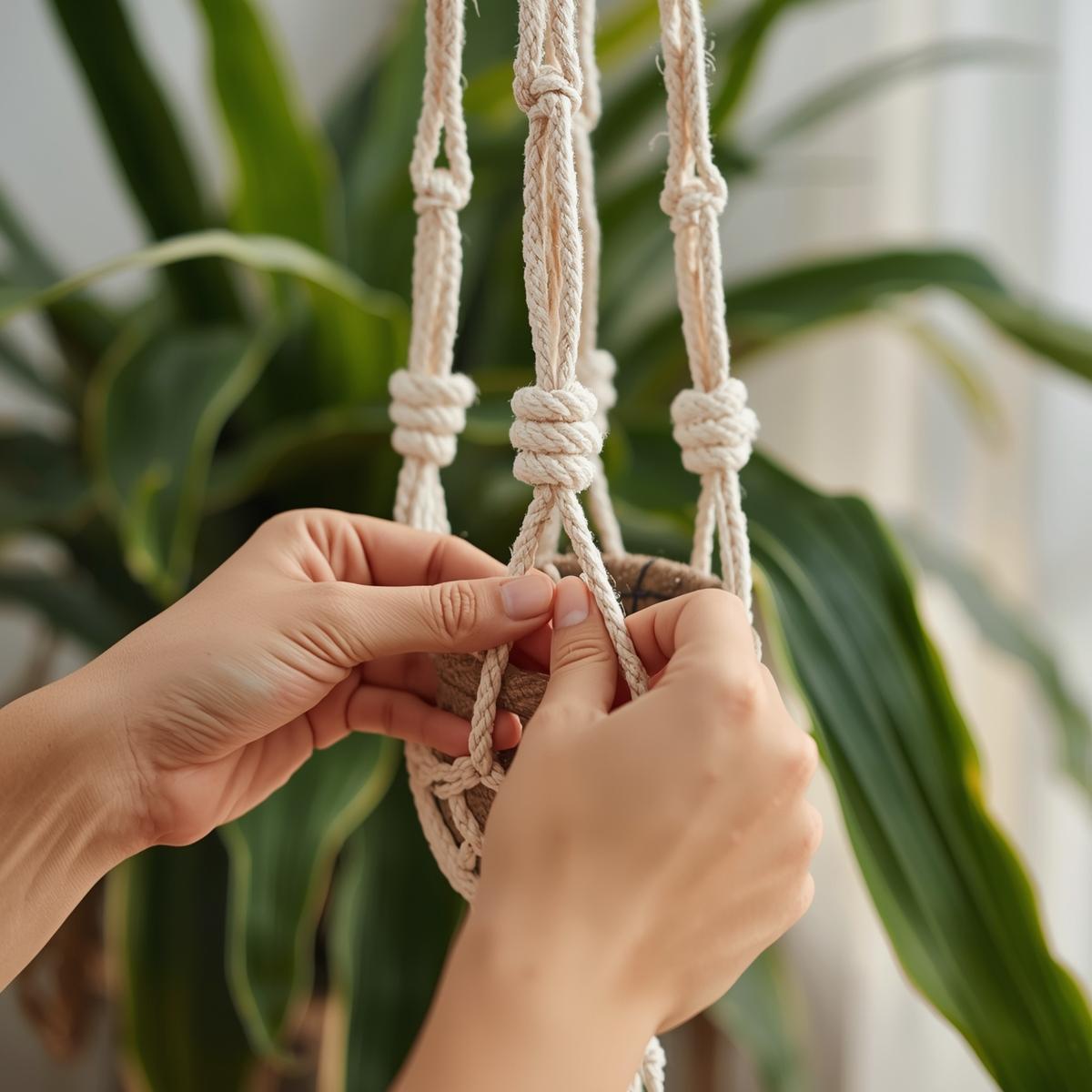Macrame is making a major comeback — and for good reason! If you’ve been scrolling through Pinterest or Instagram lately, you’ve probably noticed the growing trend of macrame plant hangers. These beautiful, handmade creations bring a cozy, natural, and artistic touch to any space.Today, we’ll uncover why everyone loves how to make macrame plant hanger, how you can create your own, and why this trend continues to bloom across homes in the United States, United Kingdom, and Canada.Let’s get knotting — and decorating! 🌸🌼 Introduction: The Return of Macrame MagicOnce a beloved craft of the 1970s, macrame has returned as one of the most stylish and sustainable ways to decorate your home. Its soft textures, natural ropes, and intricate knots fit perfectly into today’s boho-chic, minimalist, and eco-friendly lifestyles.The “Why Everyone Loves How to Make Macrame Plant Hanger” trend isn’t just about decoration — it’s about creativity, mindfulness, and making something with your own hands. Whether you’re a beginner crafter or a DIY enthusiast, macrame offers a relaxing way to personalize your home with handmade art.🪴 What Is a Macrame Plant Hanger?A macrame plant hanger is a decorative holder made of knotted cord or rope that suspends a plant pot from the ceiling or wall.✨ Key Features:Made with cotton cord, jute, or hempUses various knotting techniques (like square knots or spiral knots)Perfect for hanging potted plants indoors or outdoorsThe result? A lightweight, airy design that adds texture, beauty, and a natural vibe to your home.💡 Fun Fact: Macrame comes from the Arabic word migramah, meaning “decorative fringe.”🌿 Why Everyone Loves How to Make Macrame Plant HangerThere’s a reason this DIY craft has captured hearts everywhere — it’s simple, stylish, and sustainable.1. It’s Easy and AffordableYou don’t need fancy tools or expensive materials. With just some rope, scissors, and a plant pot, you can create a stunning decor piece for under $10.2. A Relaxing Mindful HobbyMacrame knotting is rhythmic and soothing — the perfect stress reliever. Many crafters find it helps improve focus and calm the mind after a busy day.3. Customizable for Any HomeFrom bohemian bedrooms to modern apartments, macrame complements almost any interior style. Choose natural cotton for an earthy look or colorful cords for a vibrant touch.4. Sustainable and Eco-FriendlyUnlike plastic planters or mass-produced decor, macrame is made from natural materials that are biodegradable and reusable.5. Perfect for Plant LoversIt’s a creative way to display your favorite greenery — like trailing ivy, pothos, or spider plants — without taking up shelf space.🧶 Step-by-Step: How to Make a Macrame Plant HangerLet’s walk through an easy DIY guide so you can see why this trend is so addictive!🪴 Materials You’ll Need:100 feet of 3–5 mm cotton cord (depending on pot size)Metal or wooden ring for hangingScissorsTape measureA potted plant🪢 Step 1: Cut and Prepare Your CordsCut 8 cords, each about 10 feet long. Fold them in half and loop them through your ring to form 16 working strands. Tie a lark’s head knot to secure them.💡 Tip: Hang the ring from a doorknob or hook while working for better control.🪢 Step 2: Create the Top KnotsGather all cords and tie a gathering knot about 2 inches below the ring. This will form the top part of your hanger.🪢 Step 3: Make the Decorative SectionDivide the cords into 4 groups of 4.Tie a square knot in each group about 4 inches down. Repeat this step to create a spiral or diamond pattern — depending on your design preference.🪢 Step 4: Form the BasketTo hold your plant securely, take two cords from one group and two from the next group. Tie square knots where they meet — about 4 inches below the previous knots.Repeat around the entire hanger to create a crisscross “net” effect.🪢 Step 5: Finish the BottomGather all cords together under your pot and tie a large knot about 3–4 inches below it. Trim the ends evenly or leave them frayed for a boho fringe look.And voilà — your first macrame plant hanger is ready to hang and admire! 🌿🌸 Creative Variations to TryOnce you’ve mastered the basics, you can experiment with new designs.✨ Try These Styles:Double-tier hangers for two pots stacked verticallyColored cords (mix natural beige with pastel tones)Beads or shells woven into knots for a beachy vibeWall-mounted hangers for small spaces💡 Pro Tip: Combine macrame with wooden shelves or glass jars for a trendy hanging garden aesthetic.🌿 Where to Display Your Macrame Plant HangerMacrame hangers look amazing almost anywhere!🏡 Ideas for Placement:In a sunny living room window for your houseplantsAbove a bathtub with humidity-loving plants like fernsOn your balcony for a touch of natureIn the kitchen for hanging herbs like basil and mintAs a gift — handmade hangers make heartfelt presents!🌱 Practical Tips for BeginnersIf you’re new to macrame, don’t worry — here are some helpful hacks to make the process easier:💡 Beginner Tips:Start with thick cord — easier to handle and see your knots clearly.Watch tutorials — visual guides on YouTube or Pinterest can help you follow along.Keep knots consistent for a neat finish.Measure twice, cut once — it’s better to have extra cord than to run short.Experiment freely — macrame is all about creativity and imperfection!🌸 Why It’s More Than Just a TrendThe love for macrame goes beyond aesthetics. It’s about slowing down, connecting with creativity, and making your home truly yours.Why Everyone Loves How to Make Macrame Plant Hanger isn’t just about hanging plants — it’s about crafting joy, mindfulness, and a sense of accomplishment. Each knot you tie weaves personality into your living space.🌿 Conclusion: Bring Boho Beauty HomeIf you’ve been looking for a simple yet stylish DIY project, macrame plant hangers are the perfect choice. They’re budget-friendly, eco-conscious, and a wonderful way to add texture and greenery to your home.So grab your cord, pick your favorite plant, and get knotting — because now you know why everyone loves how to make macrame plant hanger! 🌿💚

